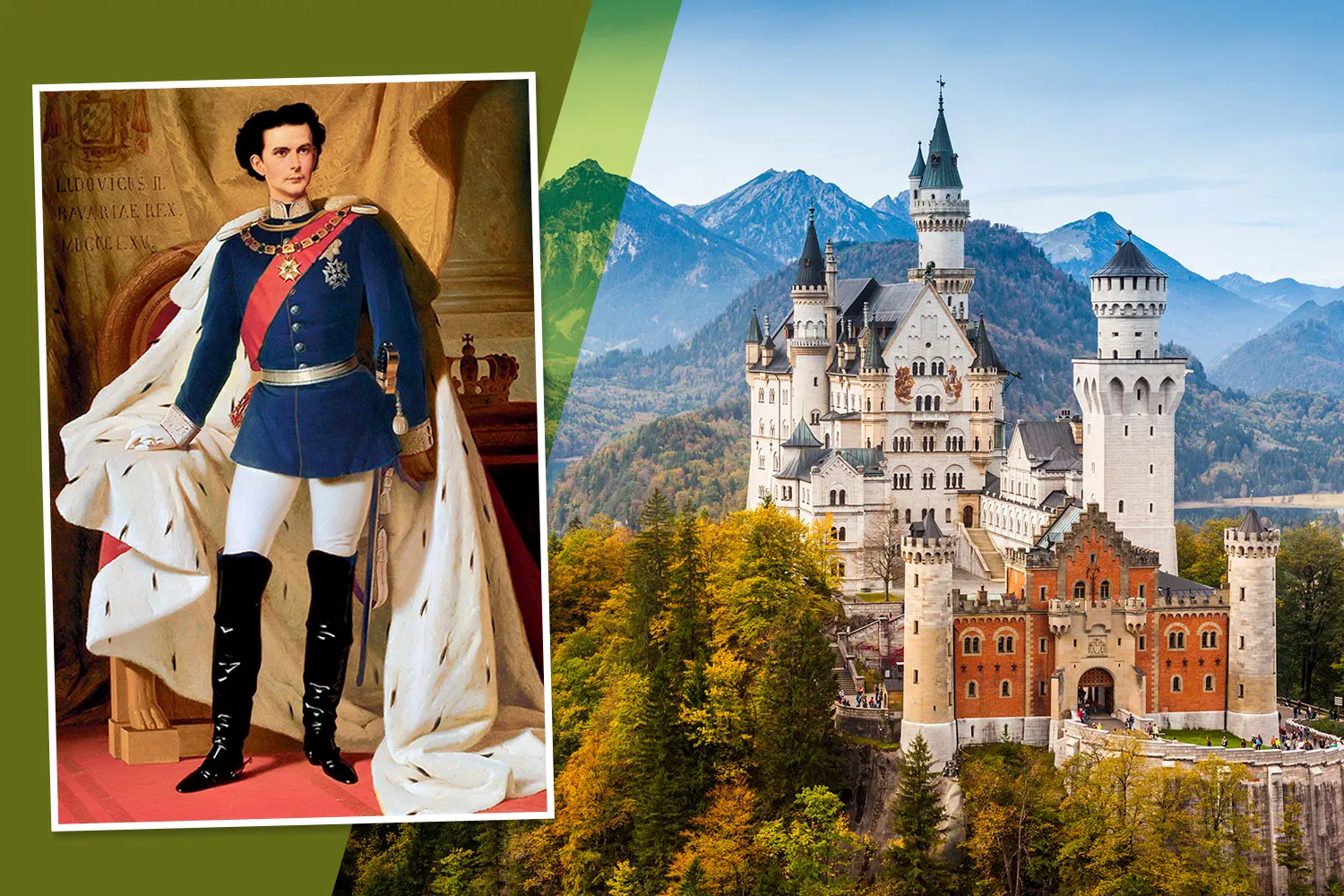Neuschwanstein Castle - The Dream, History, and Legacy of King Ludwig II
Explore Neuschwanstein Castle, King Ludwig II’s romantic masterpiece — a symbol of beauty, solitude, and the eternal dreamer’s heart of Bavaria.

The Neuschwanstein Castle rises from the Bavarian Alps like a dream sculpted in stone — a vision of towers, turrets, and mist that seems to belong more to legend than history.
Yet behind its fairy-tale beauty lies a story of solitude, genius, and the tragic vision of King Ludwig II of Bavaria.
👑 The Dreaming King
Ludwig II ascended the Bavarian throne in 1864, a young monarch fascinated not by politics, but by poetry, music, and myth.
He worshipped the works of Richard Wagner, the German composer whose operas transformed medieval legends into musical cathedrals.
Haunted by the corruption and industrial noise of his time, Ludwig sought refuge in dreams. Neuschwanstein was to be his sacred sanctuary, a retreat “for himself and Richard Wagner,” though Wagner never lived to see it completed.
“I wish to remain an eternal mystery — to myself and others.”
— King Ludwig II
🏰 Birth of a Fantasy
Construction began in 1869 on a rocky ledge above the village of Hohenschwangau, overlooking turquoise lakes and pine forests.
The design — inspired by medieval knights’ castles yet realized with 19th-century Romantic flair — came from Christian Jank, a theatrical stage designer rather than an architect.
Engineers Eduard Riedel and Georg von Dollmann transformed Jank’s sketches into reality. The result was a castle that looked backward and forward at once — medieval in spirit, modern in engineering.
With its white limestone façade, soaring towers, and mountain backdrop, Neuschwanstein embodied Ludwig’s conviction that beauty and imagination could transcend the ordinary.
🎨 A Palace of Myths
Inside, the castle became a stage for Wagnerian legends:
- The Throne Hall, inspired by Byzantine cathedrals, glows with mosaics of saints and kings.
- The Singer’s Hall celebrates the Tannhäuser legend.
- The Bedroom of the Swan Knight, carved from oak, embodies the purity of Lohengrin’s myth.
Swans — Ludwig’s favorite symbol of divine solitude — appear everywhere: in sculptures, frescoes, and chandeliers. Every room sings of longing, faith, and impossible love.
The castle was never about rule or wealth; it was a poem built in stone, where the boundaries between art and life dissolved into dream.
🌲 Solitude and Tragedy
Ludwig lived in Neuschwanstein only briefly before his mysterious death in 1886, drowned in Lake Starnberg under circumstances still debated.
He died before the castle was finished — leaving behind not a monument to power, but a monument to yearning.
Within weeks, the castle opened to the public. The king’s private dream became the world’s shared fantasy.
🌟 From Bavaria to Hollywood: Walt Disney’s Dream
When Walt Disney visited Europe in the early 1950s, he toured several castles — but Neuschwanstein left an indelible mark on his imagination.
Standing before its turrets piercing the clouds, he saw the embodiment of childhood wonder and romantic idealism. It was as though King Ludwig’s dream had waited decades for a kindred spirit to carry it into a new medium.
In 1955, Disney unveiled Sleeping Beauty Castle in Disneyland — a structure directly inspired by Neuschwanstein’s silhouette, with its asymmetric towers, steep roofs, and whimsical spires.
It became not only the centerpiece of his theme park but also the logo of the Walt Disney Company, symbolizing the very concept of dreams coming true.
The parallels between Ludwig II and Walt Disney are striking:
- Both were visionary dreamers who used art and architecture to escape the mundane.
- Both built fantasy realms that others dismissed as impractical.
- And both left behind worlds where imagination reigns eternal.
In Disney’s world, Neuschwanstein was reborn — not as a retreat from the world, but as an invitation into it, a gateway for millions to rediscover wonder.
💫 Legacy of a Dream
Today, Neuschwanstein is one of the most visited castles in the world, drawing over 1.5 million visitors annually.
Its image graces puzzles, postcards, and films; its spirit lingers in every child’s storybook castle.
Yet amid the crowds, its essence remains untouched — a song of solitude echoing across the mountains.
Neuschwanstein is not just a castle — it is the echo of a heart that dreamed too beautifully to survive its own time.
And in every turret of Disneyland, that dream still shines.
About the Author

Cultural Historian
A travel enthusiast and history lover, I created this guide to help visitors experience the magic and stories behind Neuschwanstein Castle.
Tags
Comments (0)
Loading comments...